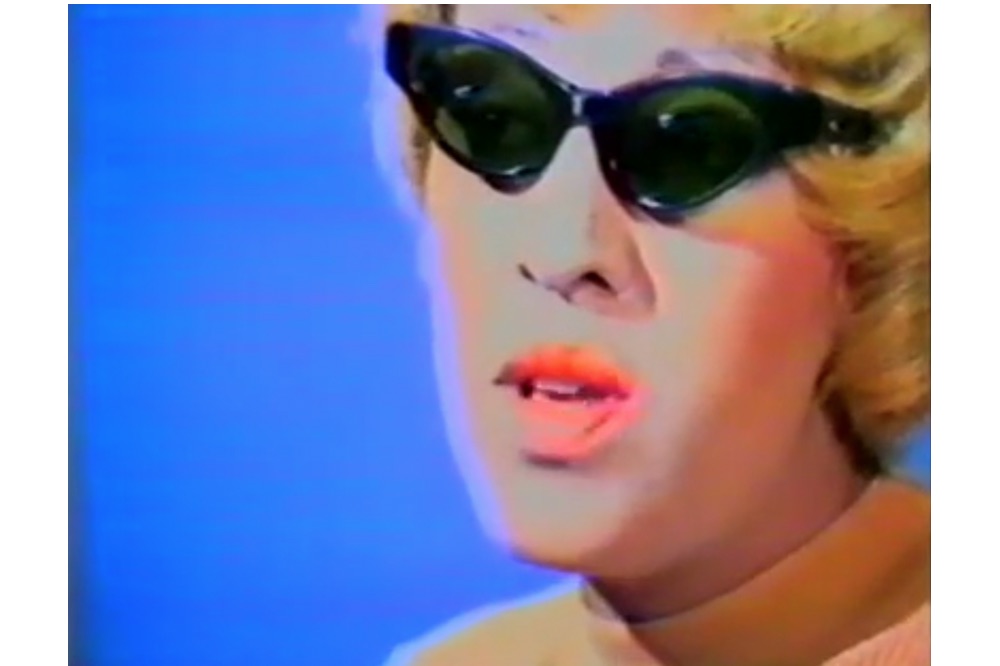!W.A.R.
The film !Women Art Revolution was created by Lynn Hershman Leeson and was released in 2010. The documentary is composed of archival footage that Leeson had taken herself and interviews of various female artists that were pioneers for the Feminist Art movement. Women Artists in Revolution a coalition that was formed in the '60s when women saw the lack of female representation in the art world and museums. The film inserts a clip of strangers who were asked if they could name three woman artists, many could only name one and this was in 2006. This film follows the feminist moment in art and how difficult it was for women to enter the art world. In this film, I saw some familiar names such as Judy Chicago, Ana Mendieta, Yoko Ono, and Marina Abramovic. But there were still many I had not known until watching this film. This just goes to show, that there is still much work we need to do in ensuring that women receive the recognition they deserve. There also must be an active effort for curriculums to teach about women just as much as they do men.

One of the artists interviewed, Nancy Spero, recalls a humiliating experience where she went to show her artwork to the art dealer Ivan Karp. She provides detail about how she was wearing tall heeled boots and carried a large portfolio. But, Karp never offered her a surface space to display her work and she ended up presenting it from the floor. Spero said it made her feel like she was genuflecting him, and at the end of the meeting he asks, "Why'd you bring these to me for?". There were many moments where female artists were not taken seriously since the art world was a space that was dominated by white men. Howardena Pindell, says she was even more so daunted by being an artist because she was a black woman. For Pindell, there was yet another layer of discrimination.
 |
| Howardena Pindell, Free, White, and 21, (still), 1980 (credit: momus.ca) |
When these young female artists entered art school, minimalism was gaining its foothold, but women did not see themselves getting their point across with this type of art. Feminist art was born from the need to make their voices heard which they began to do through performance, installation, etc. It also timed well with the era of protests and civil rights movements. Activism for the integration of female artists began sparking all over the country, but mostly in the East Coast. Many of the well-known museums were producing all-male exhibitions. Specifically, The Whitney Annual who had chosen to do a show about sculptural works, but did not invite even one female sculptor. This show was picketed every Saturday and they even projected slides of female artists' work on the exterior of the museum. They also made a fake press release on Whitney stationery. Dr. Lucy Lippard describes that it read along the lines of, "The Whitney was so pleased to be the first museum to acknowledge that women artists had been neglected and would have 50% women and 50% non-whites"(14:15-14:25).
 |
| Dr. Lucy Lippard |
Judy Chicago then created the first Feminist Art Program at Fresno State and she said it was like remedial education because they were studying their own history and heritage. Through this program, they created art from the topics they would discuss at their meetings. They also exposed some harsh realities such as opening up about being victims of sexual assault. These conversations were very important to have, and would not have been had if it wasn't for this feminist program. Then Judy Chicago went to Cal Arts where an important art conference was held. The conference invited women from all over the country to show slides and discuss their work. Many women felt visible for the first time as artists. The documentary exposed the rejections, such as Leesons' own work being returned by a buyer because buying women's art is a "bad investment". It exposed the obstacles that were placed in their way, such as Congress proposing a bill to ban Judy Chicago's piece The Dinner Party from being exhibited. Lastly, it exposed all the protests that needed to happen because museums had only featured men time after time failing to see the wrong in it themselves. If their activism had not existed, we would be seeing very different art collections today. Many female artists today understand that a lot of the opportunities they have were made possible by all the female artists that came before them. I am very inspired and thankful for all the artists who were presented in this documentary.
 |
| Judy Chicago, The Dinner Party, 1974-1979 |
I enjoyed this documentary very much, and I applaud Lynn Hershman Leeson for documenting these women over the decades and sharing the stories of so many other female artists who share the ways they stayed resilient and made a place for themselves in Contemporary art history. She patiently waited for her the ending of this lifelong work, that she found once the exhibit WACK was produced. Many of the artists finally saw their artwork in an exhibition that celebrated and honored their cultural contributions.
Total time: 1 hour 22 mins
Comments
Post a Comment